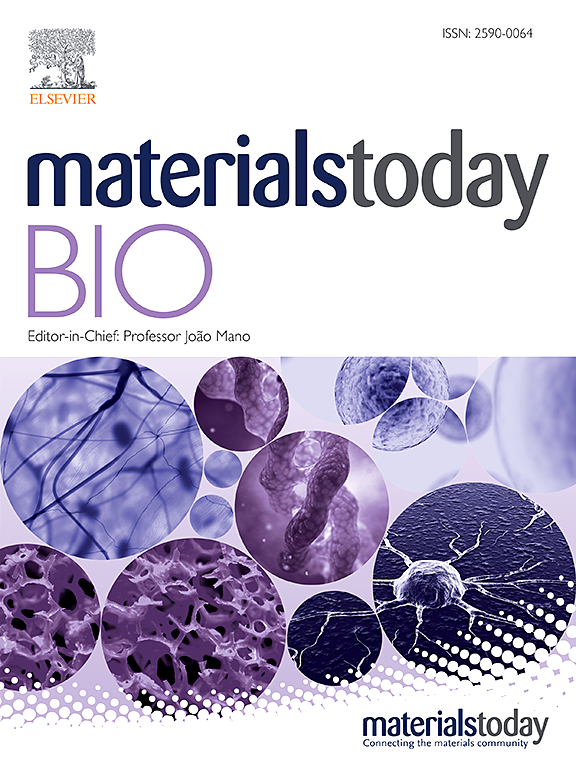An MXene nanocomposite hydrogel for enhanced diabetic infected wound healing via photothermal antibacterial properties and bioactive molecule integration
IF 8.7
1区 医学
Q1 ENGINEERING, BIOMEDICAL
引用次数: 0
Abstract
Diabetic wounds are a major clinical challenge due to their chronic, non-healing nature, which significantly impacts patients' quality of life. Traditional treatments often fail to effectively promote wound healing, highlighting the need for new biomaterials. In this study, we developed a composite hydrogel (KC@PF@TA) that combines the photothermal and antibacterial properties of Ti₃C₂Tx-Ag (Titanium carbide-silver) with the regenerative effects of paeoniflorin (PF). The hydrogel was optimized by adjusting the composition, crosslinking density, and the incorporation of nanoparticles, which enhanced its mechanical strength, photothermal conversion efficiency, antibacterial properties, and biocompatibility. The optimized hydrogel demonstrated enhanced cell proliferation, migration, and robust photothermal and antibacterial properties in vitro. In a diabetic murine model of Staphylococcus aureus-infected wounds, KC@PF@TA exhibited exceptional therapeutic benefits in antibacterial, anti-inflammatory, angiogenic, and tissue regeneration. Overall, our results suggest that composite hydrogels with controlled bioactive agent release and mechanical modulation present a promising solution for treating chronic diabetic wounds.

求助全文
约1分钟内获得全文
求助全文
来源期刊

Materials Today Bio
Multiple-
CiteScore
8.30
自引率
4.90%
发文量
303
审稿时长
30 days
期刊介绍:
Materials Today Bio is a multidisciplinary journal that specializes in the intersection between biology and materials science, chemistry, physics, engineering, and medicine. It covers various aspects such as the design and assembly of new structures, their interaction with biological systems, functionalization, bioimaging, therapies, and diagnostics in healthcare. The journal aims to showcase the most significant advancements and discoveries in this field. As part of the Materials Today family, Materials Today Bio provides rigorous peer review, quick decision-making, and high visibility for authors. It is indexed in Scopus, PubMed Central, Emerging Sources, Citation Index (ESCI), and Directory of Open Access Journals (DOAJ).
 求助内容:
求助内容: 应助结果提醒方式:
应助结果提醒方式:


